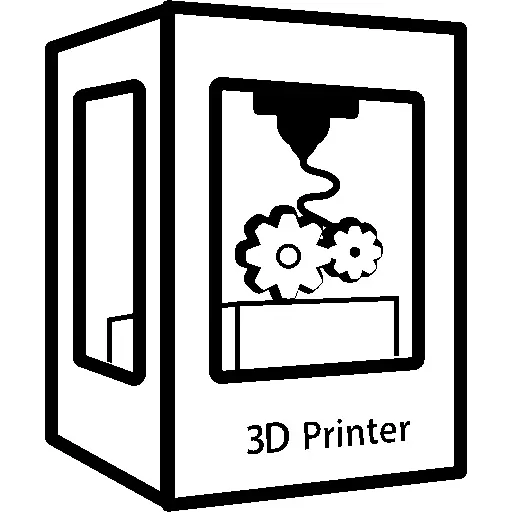

I’d love to see these complexity results compared against humans for a laugh.
Software engineer (video games). Likes dogs, DJing + EDM, running, electronics and loud bangs in Reservoir.


I’d love to see these complexity results compared against humans for a laugh.
Liquid Trees! Slam it down fast!


It wouldn’t surprise me if this decision was more about external conditions than internal ones. They’ve got the money to burn, and are likely forecasting an insane number of sales, so timing it to ensure a more favourable global economy seems believable to me.


I backed the Kickstarter, and oh wow did I get my money’s worth! I genuinely wasn’t expecting them to finish, and that’s fine - I was there for the support and the ride, however it turned out.
It’s been so long since I originally backed the project that I’m not really that interested in playing it any more, but I’m happy for them that they got it over the line… well, most of it.
Like many Kickstarters they promised a lot without realising just how difficult or expensive it would be. There’s still a lot of deliverables ahead for them, but they’ve been pretty open about running out of money and operating on pure good will at this point, and I can’t say I blame them with over a decade of their lives poured into it.
I hope it does well for them!


But is the overall market growing? What I’d love to know is if less people are playing non-MTX games now than before, or if we’re just getting more people staying to play games and they happen to be drawn to MTX games, ie. a broader target market, in the same way we saw mobile gaming explode with people who never played games before.


It’s really not limited to the game industry. A project of any kind with 10 people vs 100/1000 people is going to be a very different experience. It’s just human nature - there’s more planning and communication required, and more personality types involved.


Doesn’t that defeat the purpose of switching, if Google still get to harvest all your data?
https://community.home-assistant.io/t/fsr-the-best-bed-occupancy-sensor/365795
This is the best write-up I’ve seen - essentially a force sensitive resistor on the bed slats and an ESP32 will get you the results you’re after.
Now do crypto.


I have no mouth but I must scream


I worked for a large AAA during the pandemic, and it was ridiculous how many people they hired in a short space of time. We quadrupled our studio size over 12 months. So when layoffs started happening, of course our studio scaled back. Public corporations cannot be trusted to act ethically.


I’ve played around with using PLA to make plant pots on an old Ender 3. It wasn’t quite waterproof, but pretty close. If you wanted a perfect seal for underwater shenanigans, I’d probably experiment with different wall thickness settings, and maybe temperatures/fan cooling settings. You want to try and minimise the tiny air pockets between layer and filament drawing lines. (Resin 3D printers are probably better at this tbh.)
I had reasonable success using a hot air gun to melt the outer layer of PLA to make it perfectly smooth, but this can deform your object if it heats up too much, so I’m guessing very hot temperatures and less contact time would be the ideal setting.
You could also try smearing Vaseline or resin coating the outside of the object.


This doesn’t mean that Meta denies using shadow libraries, its argument is that using such data to train its LLM models constitutes fair use under U.S. copyright law.
Oh wow, I’m very much looking forward to this argument… “We believe pirating the copyrighted commercial works of others en masse to develop our own commercial product constitutes fair use… China bad!”


I had a good experience with Daikin split systems, but it’s really going to depend on your region and what’s available in your area, or what you’ve already got. If you’re looking for inspiration on what works well, check the Home Assistant forums.


Best place to start would be to look at the thermostat hardware you’ve currently got, and start searching online if anyone has integrated it into Home Assistant.
I’ve lived at a few houses now with Home Assistant. In all of them I was able to integrate my HVAC and automate it, but some brands and hardware are definitely easier than others.
I think the most extreme of them required a custom esphome device connected to its PCB to talk to Home Assistant, and another required me to write my own custom component.
Hardware and brands make a huge difference, but sometimes you’re stuck with what you’ve got.


It’s how most large forums ran back in the day and it worked great. Quality over quantity.


Game Pass’ revenue grew by 5.7% in the year to June, which is below the internal target of 11%. Following the service’s declining growth rate, it was dropped as a metric contributing to Microsoft CEO Satya Nadella’s pay in 2023.
Rules for thee, not for me.


Just to play devil’s advocate, why do you want to automate your lighting? I’d consider myself an advanced HA user (been using it since 2019 and have coded several custom integrations and built custom hardware) and never bothered with automating my home lighting. I’m always walking past the light switch as I enter or exit a room anyway, so it’s not a big inconvenience.
The real wins I’ve gotten from HA are smarter home security (door locks/sensors/cameras etc), climate control, energy management, garden irrigation, and remote control of “dumb” devices like my garage door and motorised front gate.
Edit: thanks for the insights all! Seems having kids and older houses are common reasons for automating lighting.


I also liked
LGs AI Home Inside 2.0 Refrigerator with ThinkQ
Honestly, I wouldn’t trust most commercial VPNs these days, especially the ones that are nearly always on 100% discount sales. If they’re not making their revenue from customers, they must be making it some other way. And that’s a mighty fine data set they’re sitting on.